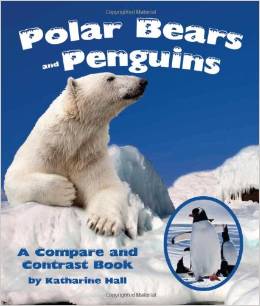2018 School Spending Survey Report
Polar Bears and Penguins
32p. (Compare and Contrast Bks.) maps. photos. Arbordale. 2014. Tr $17.95. ISBN 9781628552096; pap. $9.95. ISBN 9781628552188; ebk. $9.95. ISBN 9781628552362. LC 2013044813.
COPY ISBN
Simple sentences share basic facts about polar bears, penguins, and their habitats. The pages feel flimsy, but many of the color photographs are arresting. Potentially puzzling, the sentence "Down in the Antarctic, December occurs during summer and in sunshine" is illustrated with a photo featuring snow-capped mountains. Back matter includes "Polar Bear True or False" and a penguin matching activity.
ALREADY A SUBSCRIBER? LOG IN
We are currently offering this content for free. Sign up now to activate your personal profile, where you can save articles for future viewing





Be the first reader to comment.
Comment Policy:
Comment should not be empty !!!